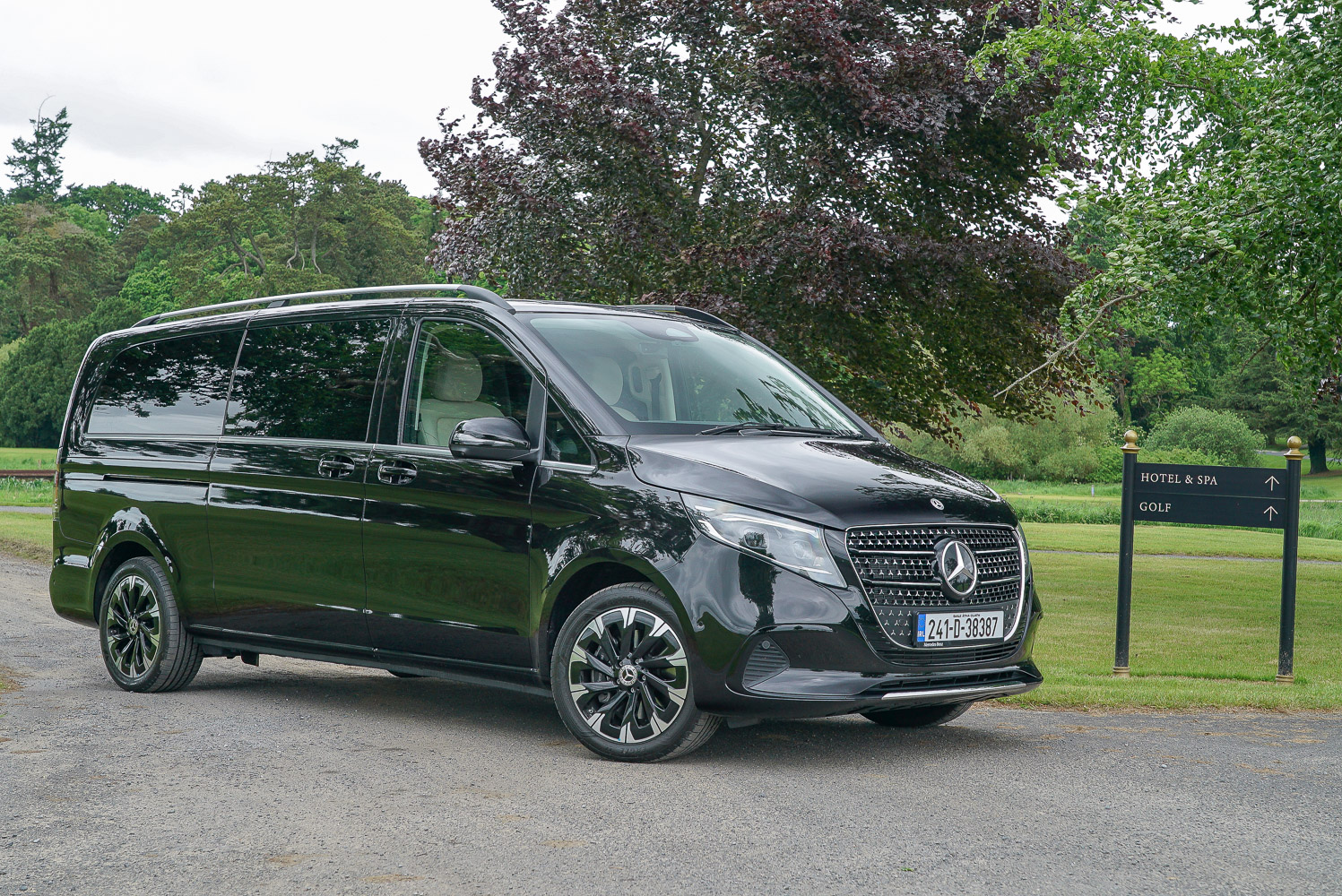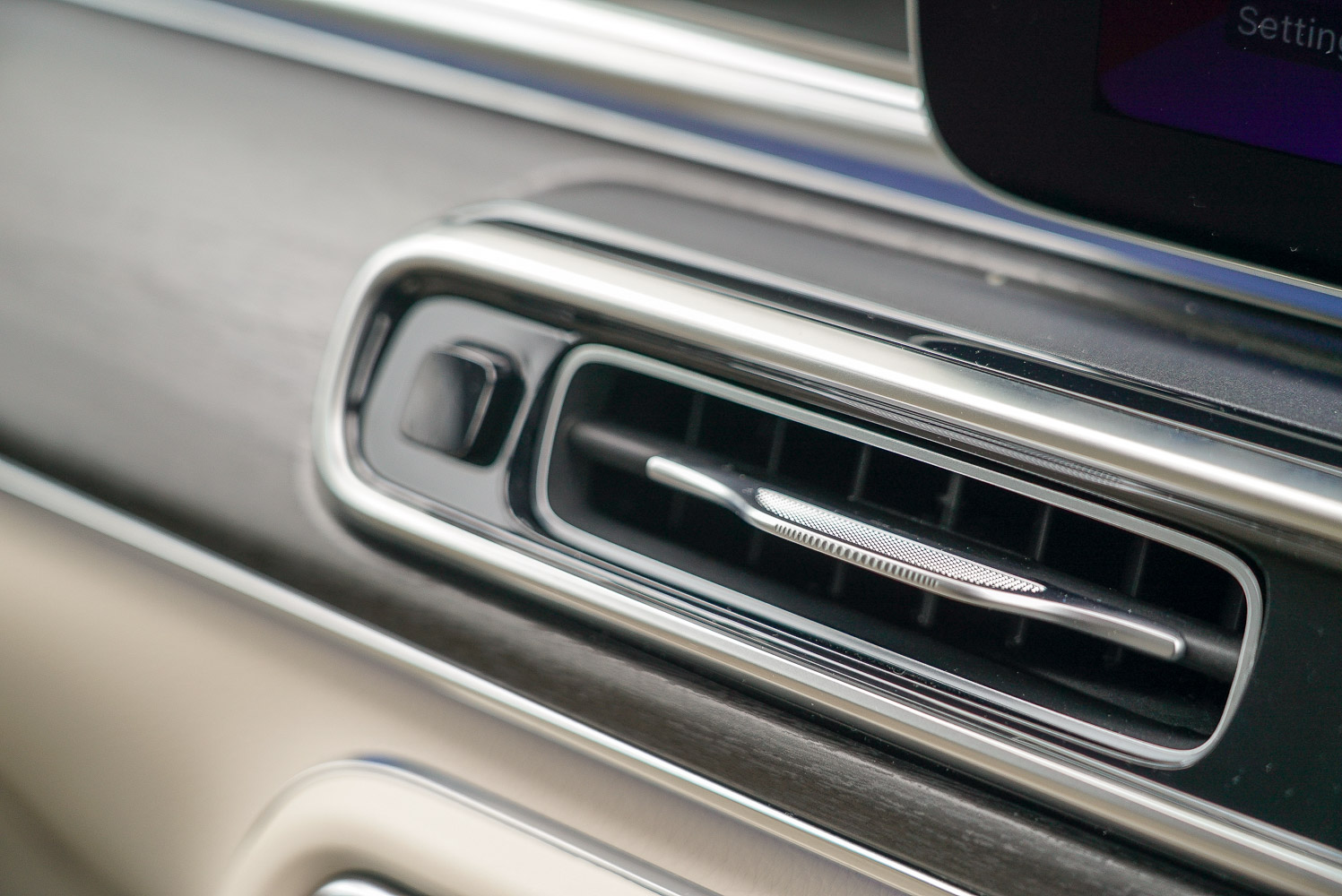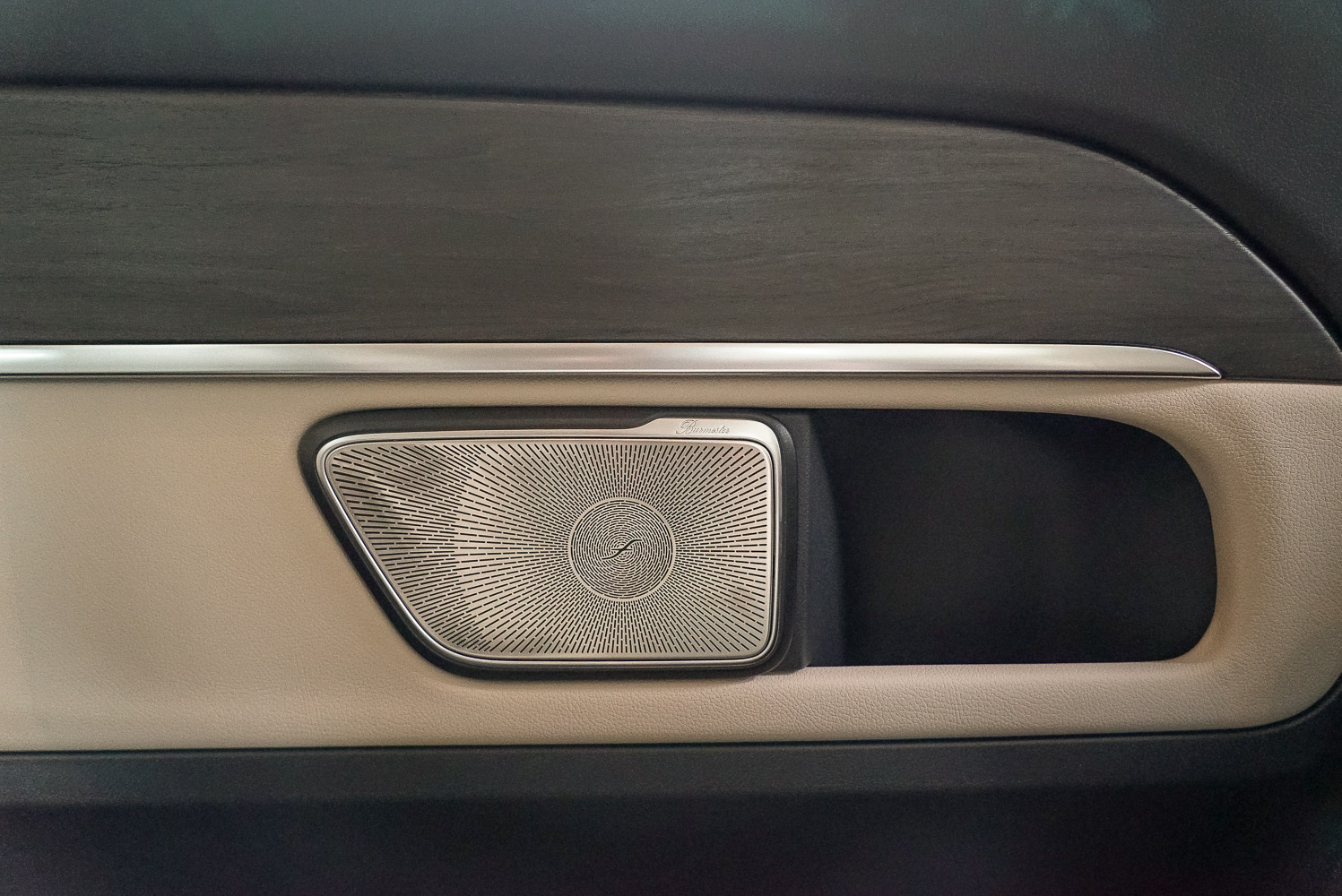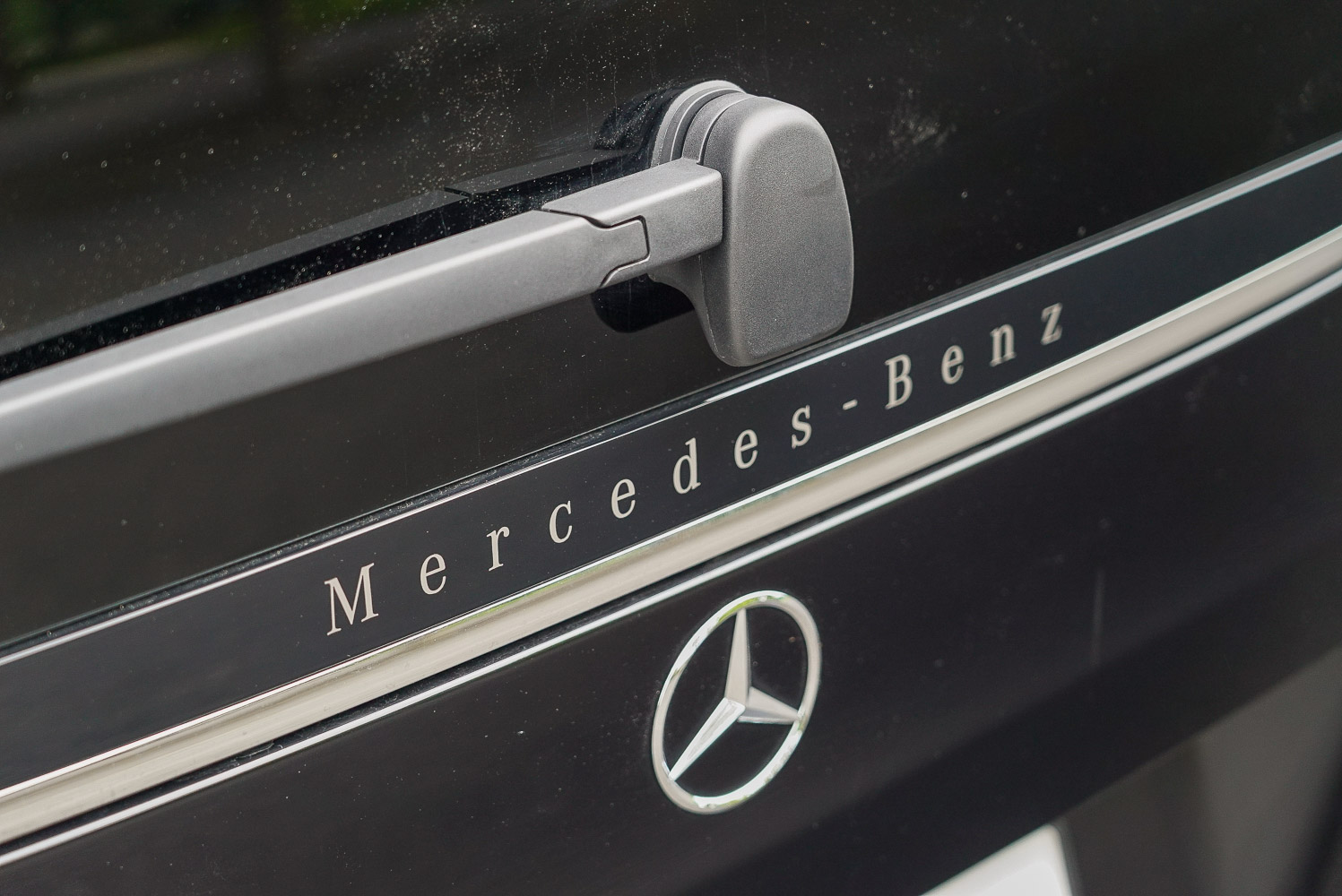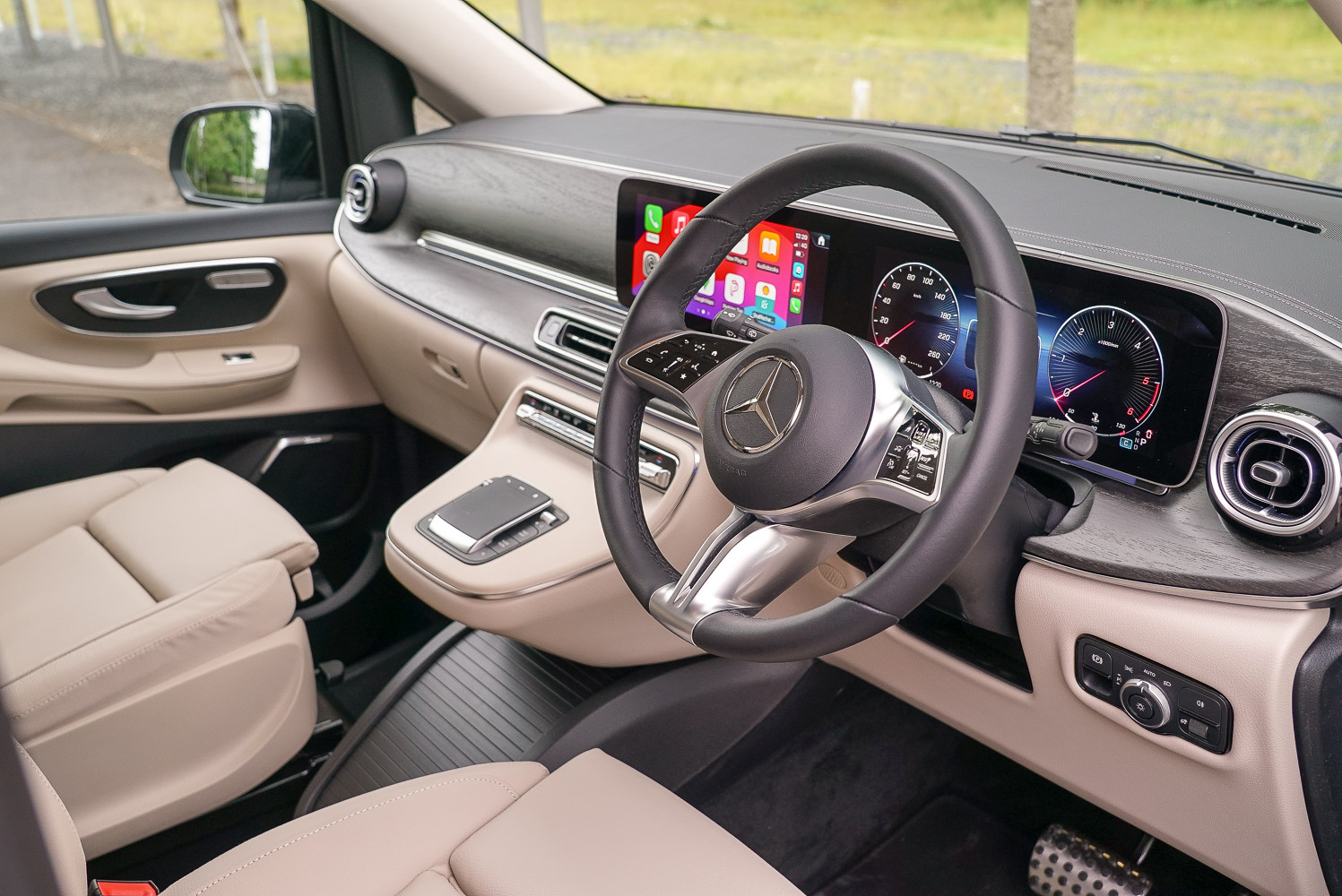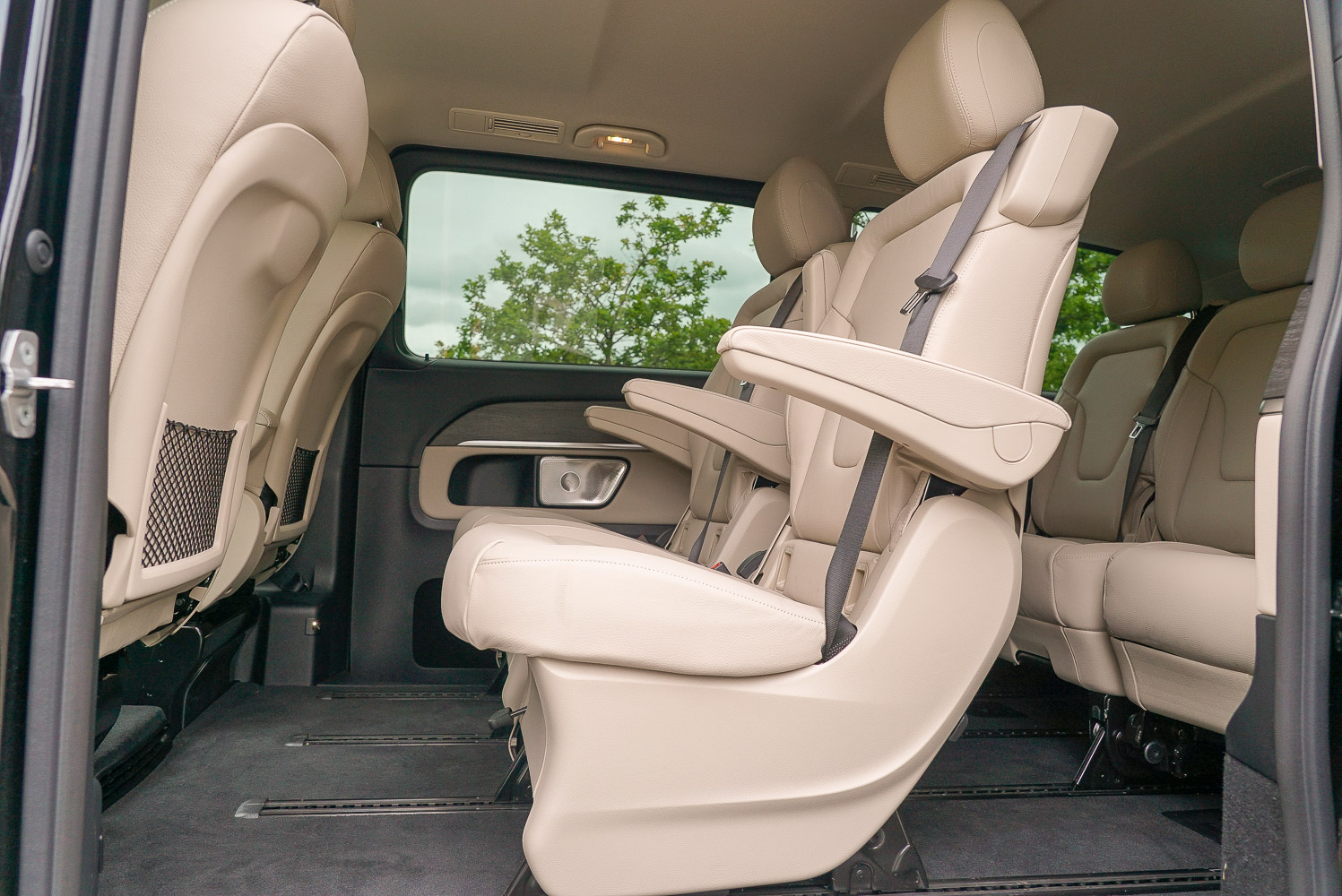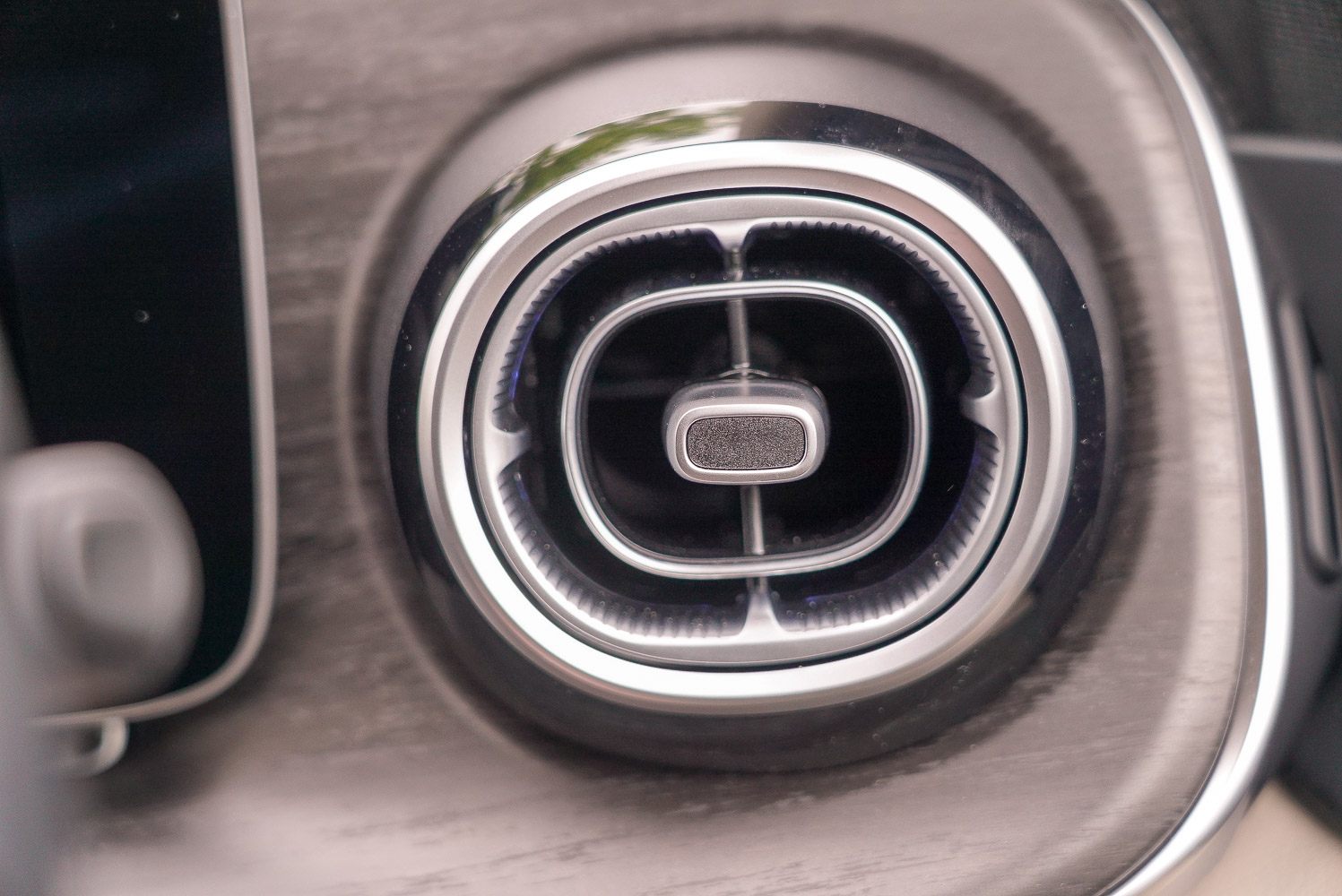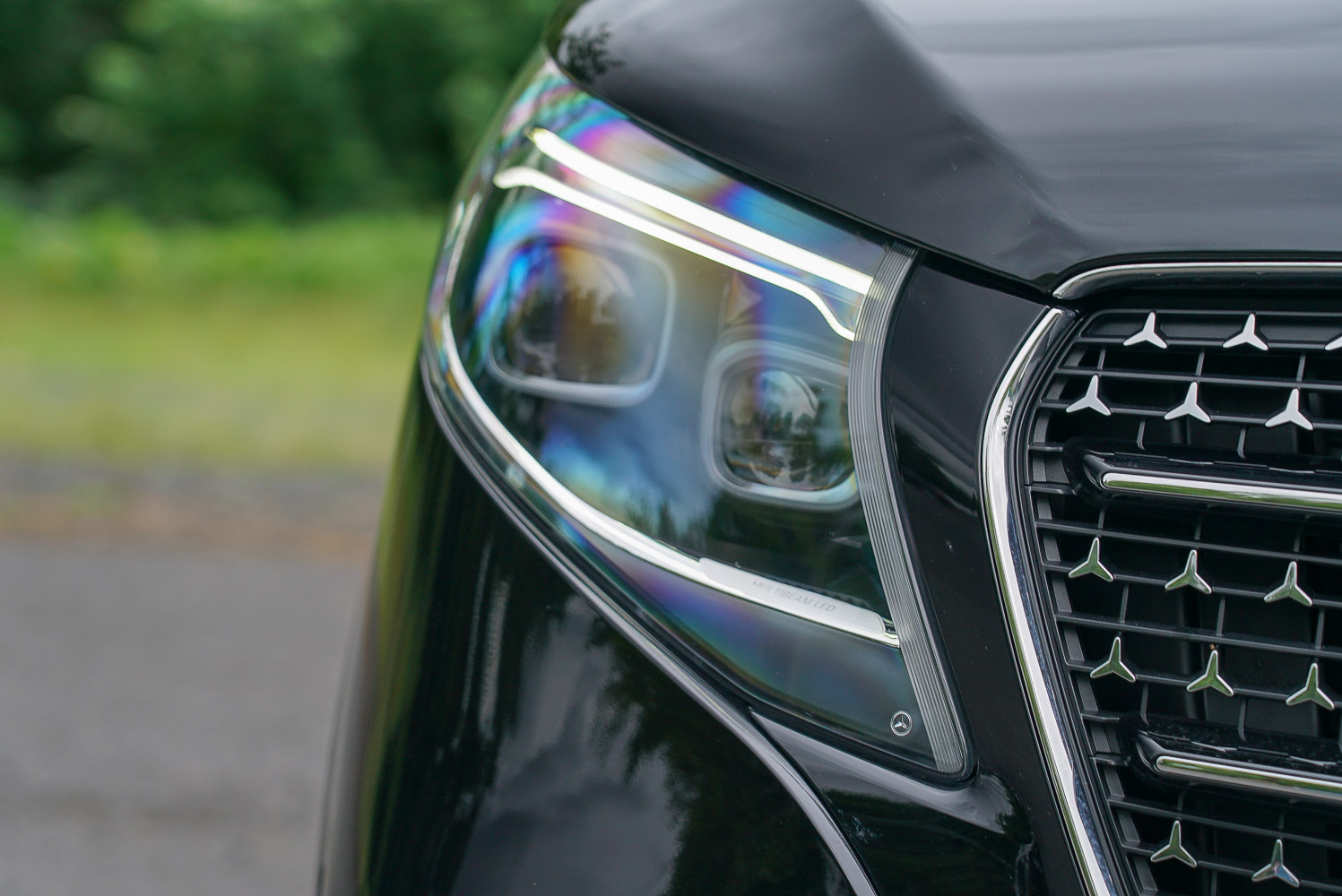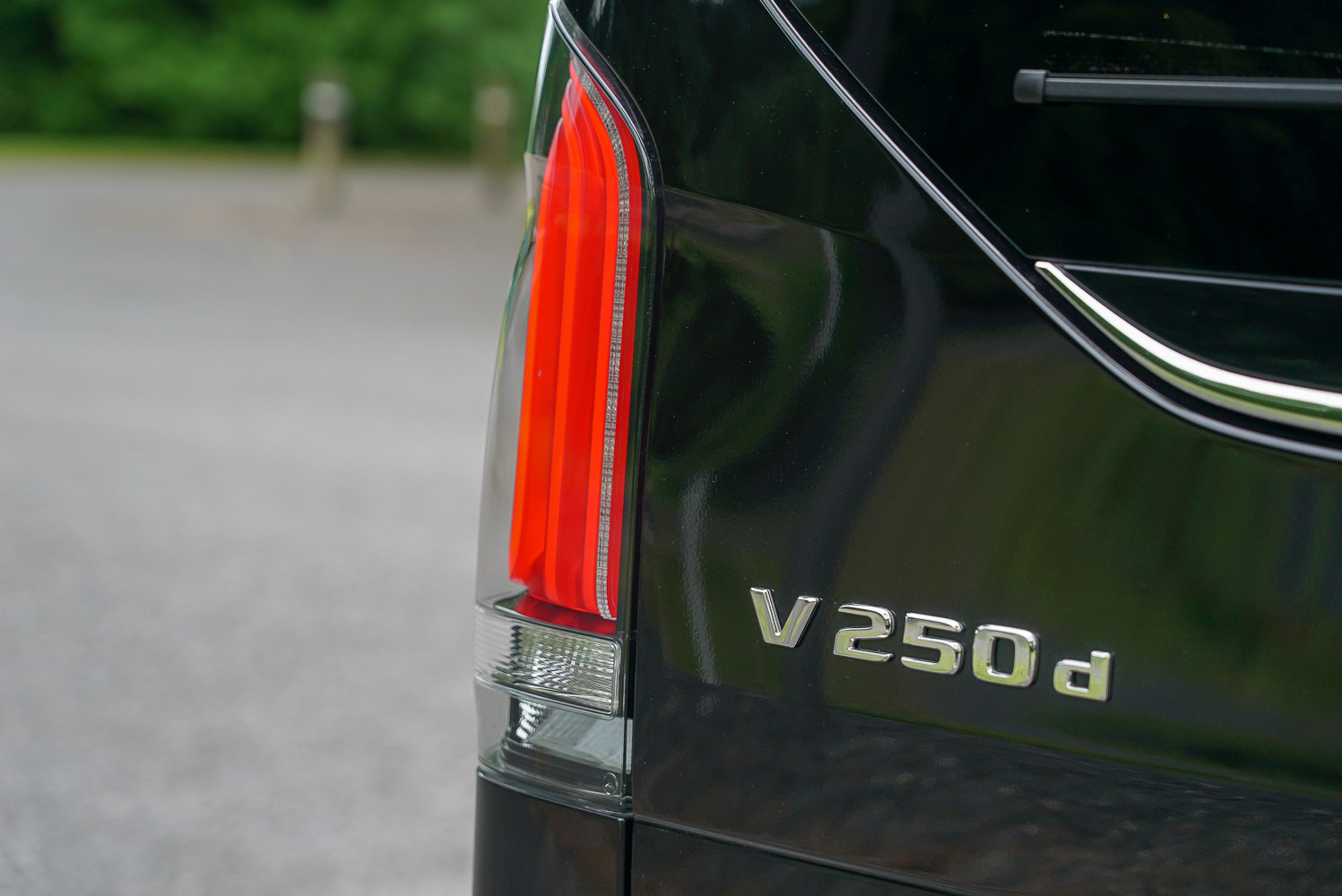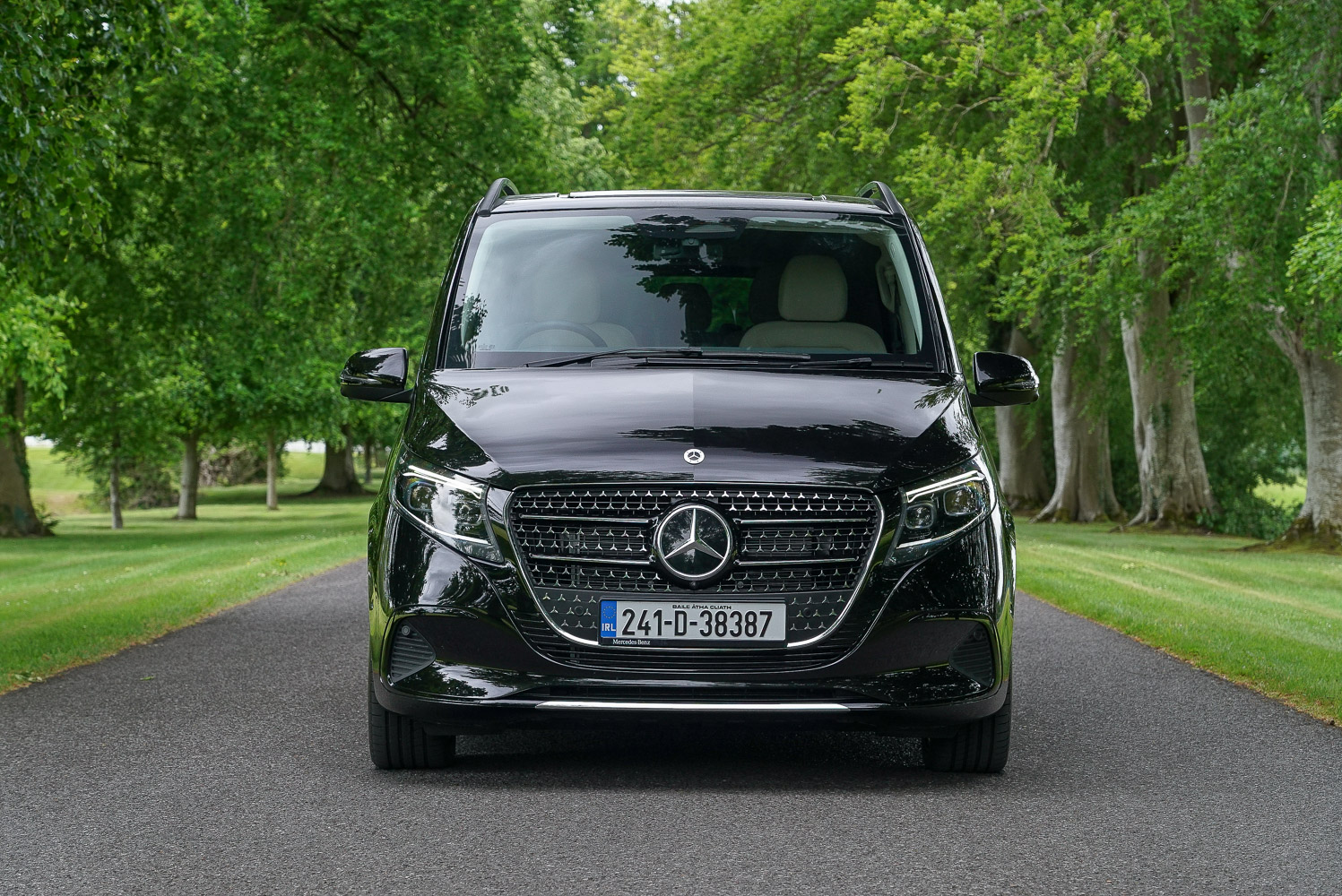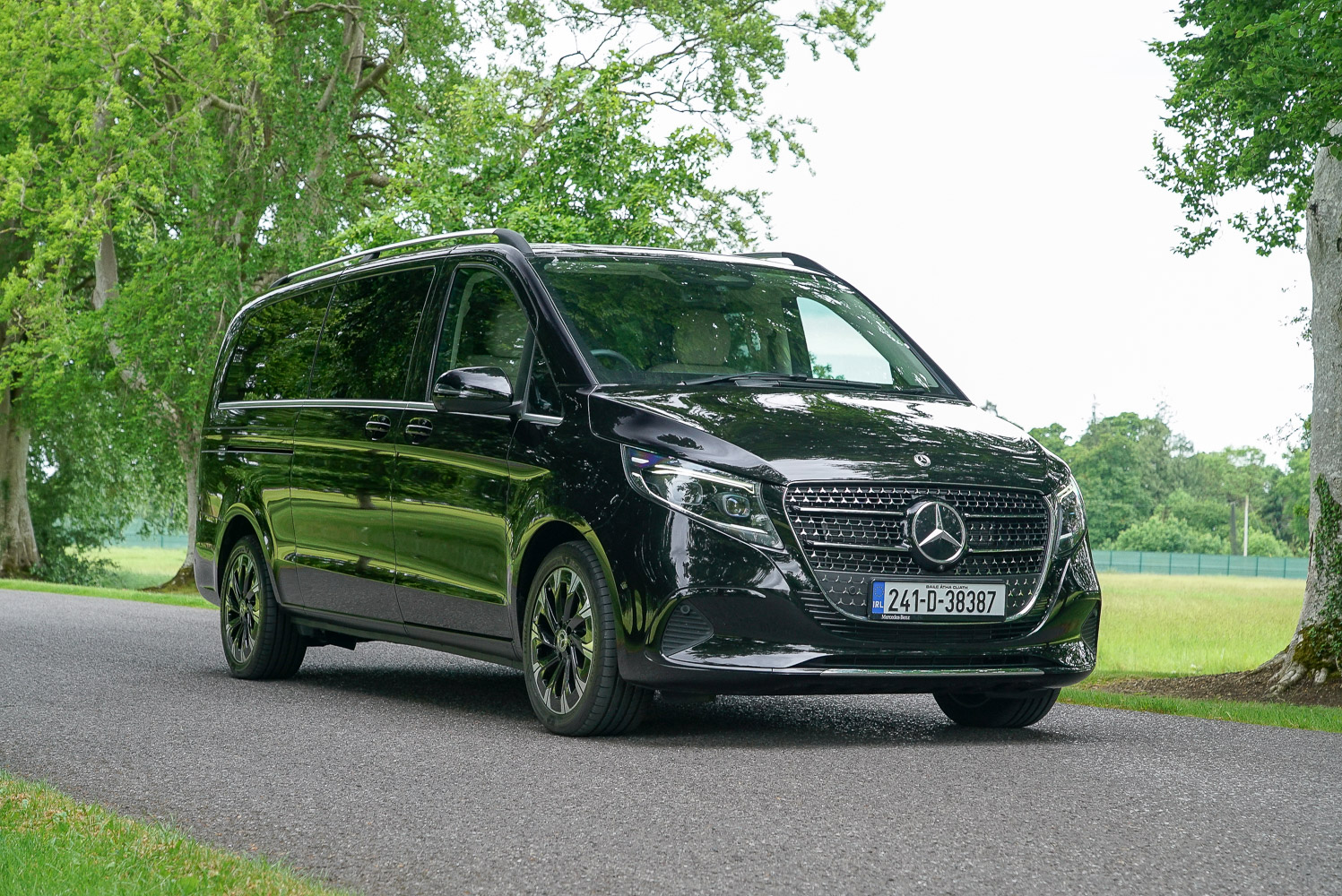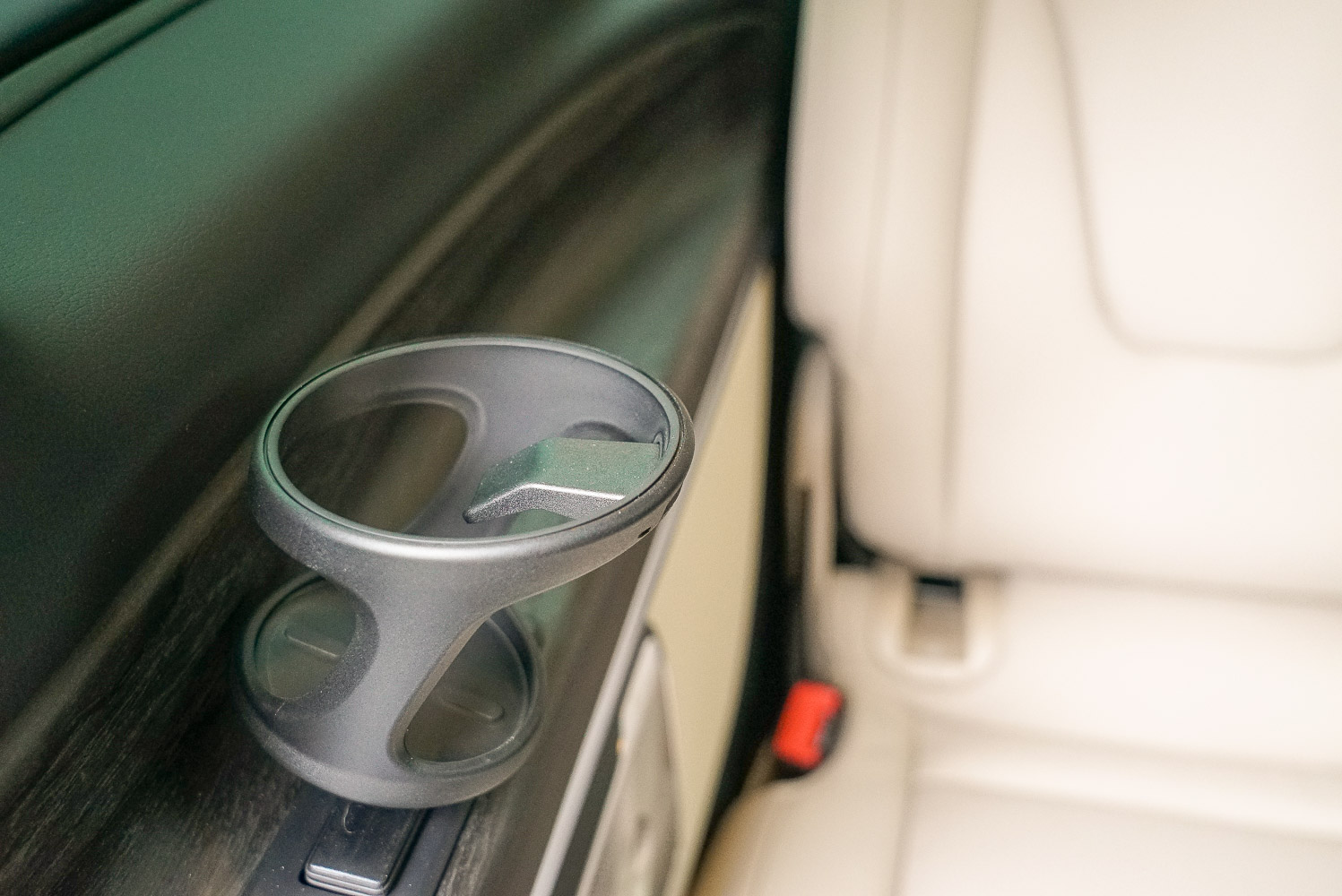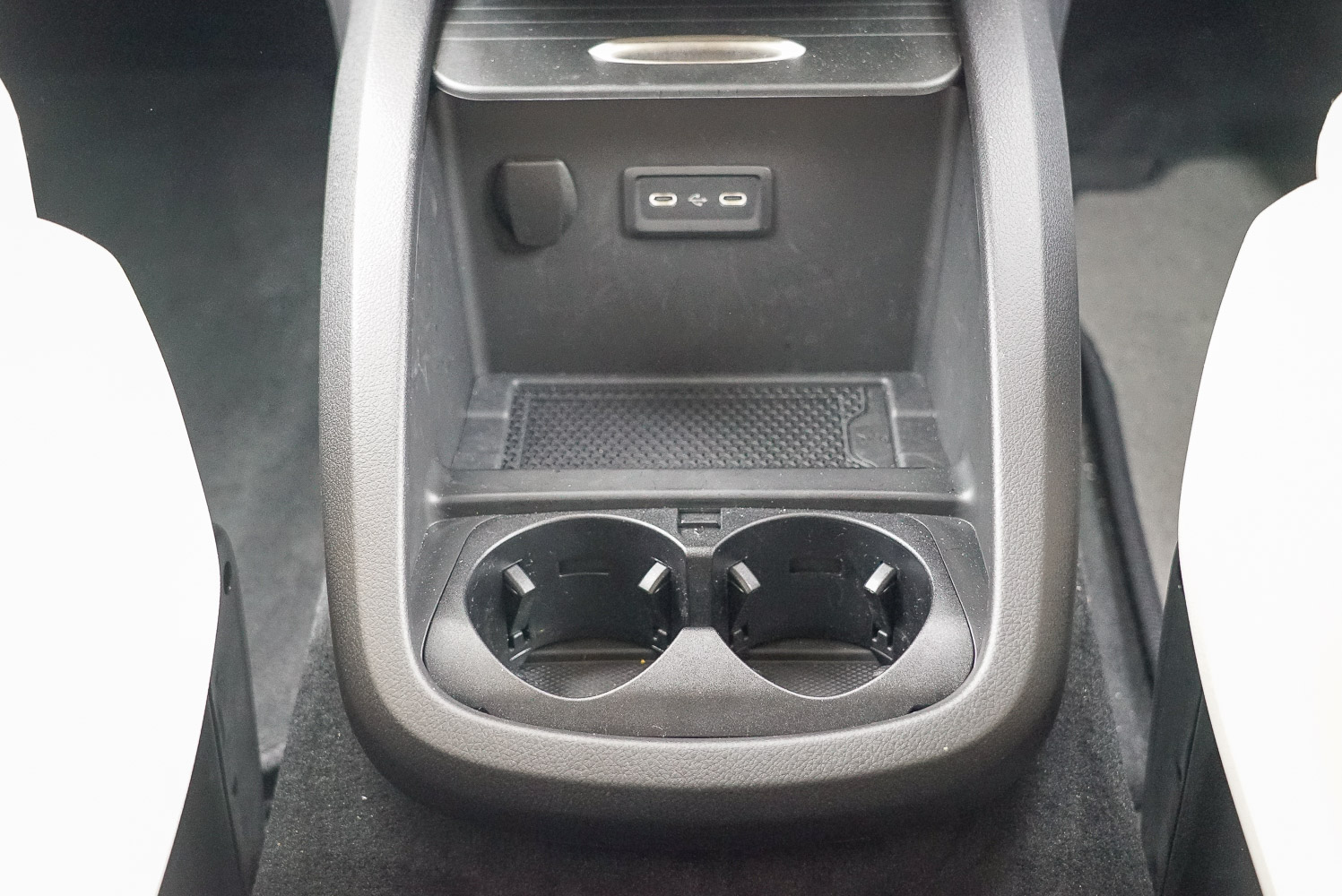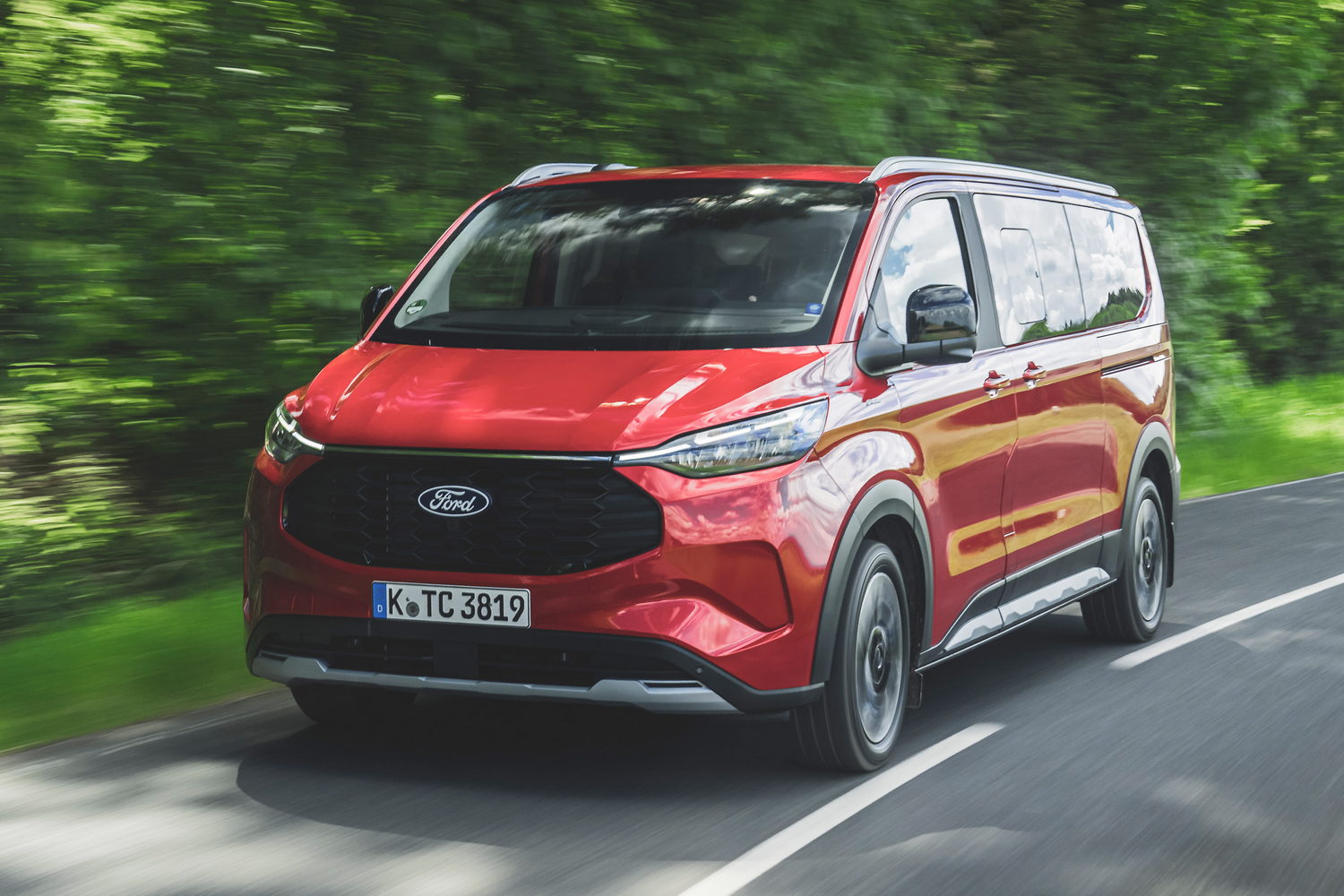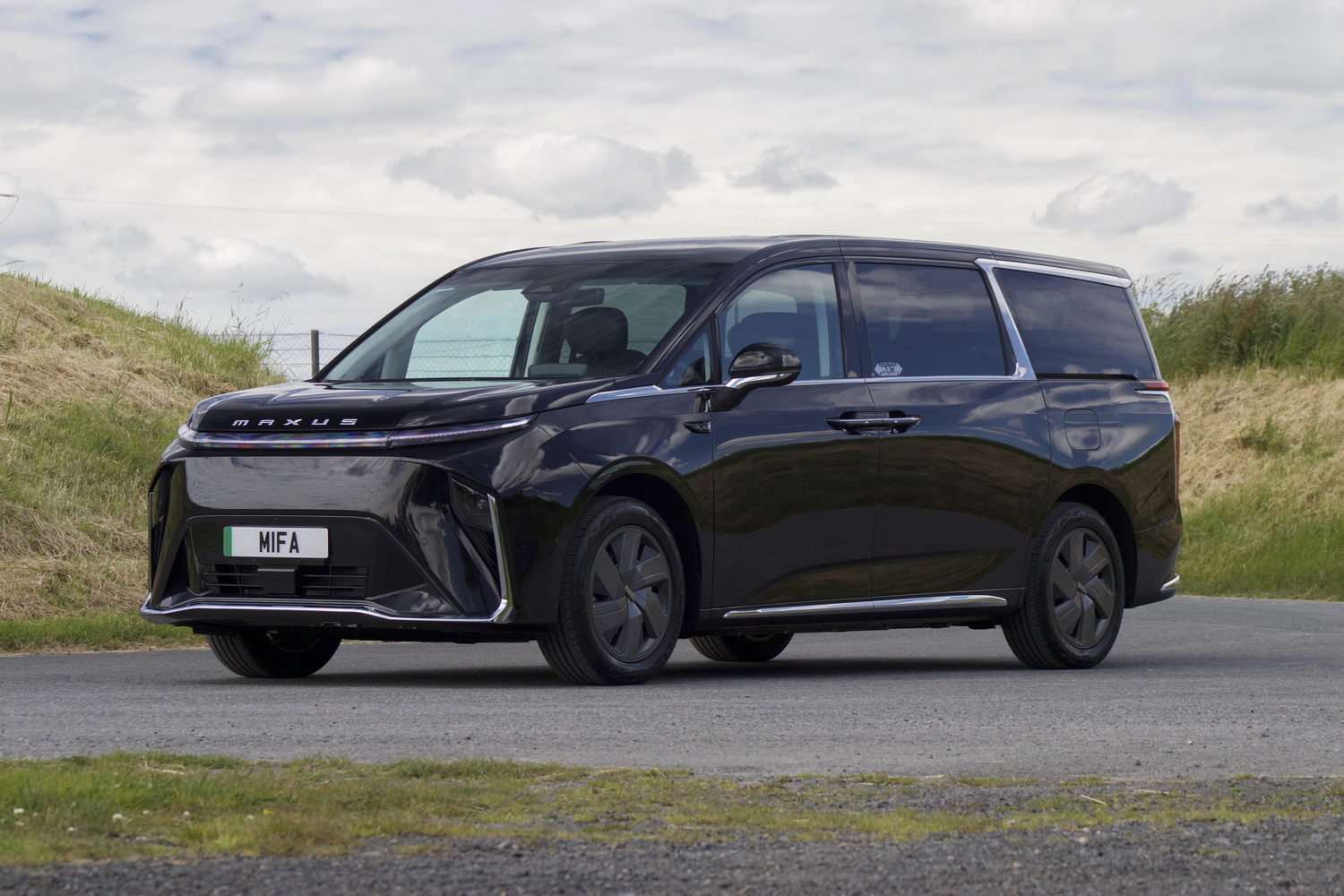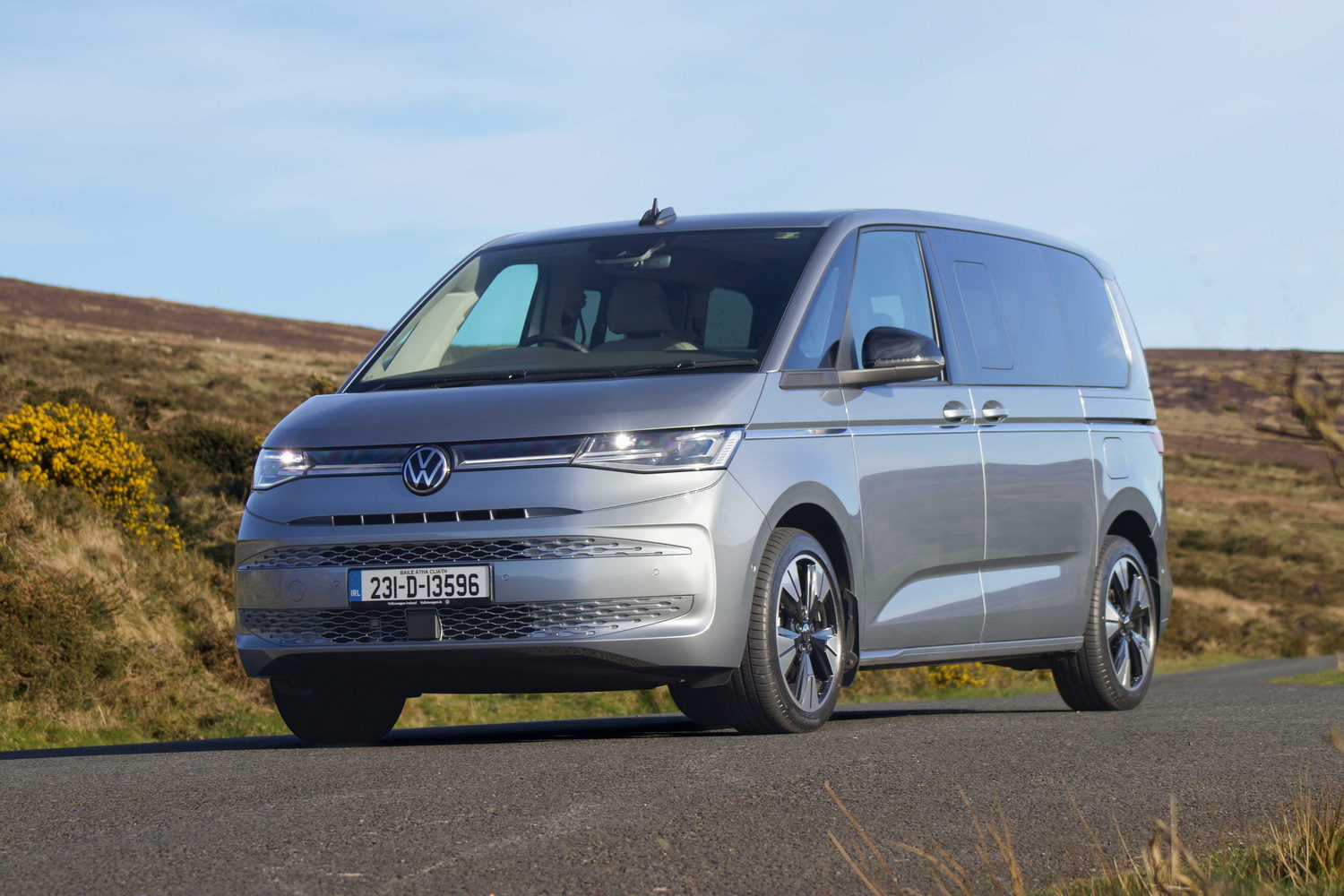When it comes to luxury transport, the Mercedes-Benz V-Class is equally at home outside a five-star hotel, a private airport terminal or unloading celebrities at a gala event.
With big, boxy dimensions, the V-Class is clearly a van-based people carrier, and it shares its bodyshell with the medium-sized Mercedes Vito panel van. It should be noted that the Vito is also available in Tourer spec, which is quite literally a van with windows and seats, but that costs less than the V-Class like-for-like, and it’s nowhere near as luxurious inside.
The upmarket nature of the V-Class means that it has very few direct rivals. The closest alternative is the Volkswagen Multivan, a car which looks boxy, but isn’t actually based on a van.
Beyond these two, and the Maxus Mifa 9 electric MPV, you’re looking at vans with passenger seats, which are often cheaper but not as upmarket as the V-Class. There are executive versions of the latest Ford Tourneo Custom that are aiming to bridge the gap, but while it’s better to drive than the V-Class, it’s still not as plush as the Mercedes. Other models that offer VIP or business-spec seating include the Opel Vivaro/Citroen Spacetourer/Peugeot Traveller trio, and the Renault Trafic Passenger, but all these vehicles show their van roots more clearly than the V-Class.
The last time we reviewed the V-Class was back in 2016, and now the company has given the V-Class an update for the 2024 that introduces some of the company’s latest in-car tech to the range. Our first chance to drive it is on Irish roads just after the new car’s launch on the Irish market.
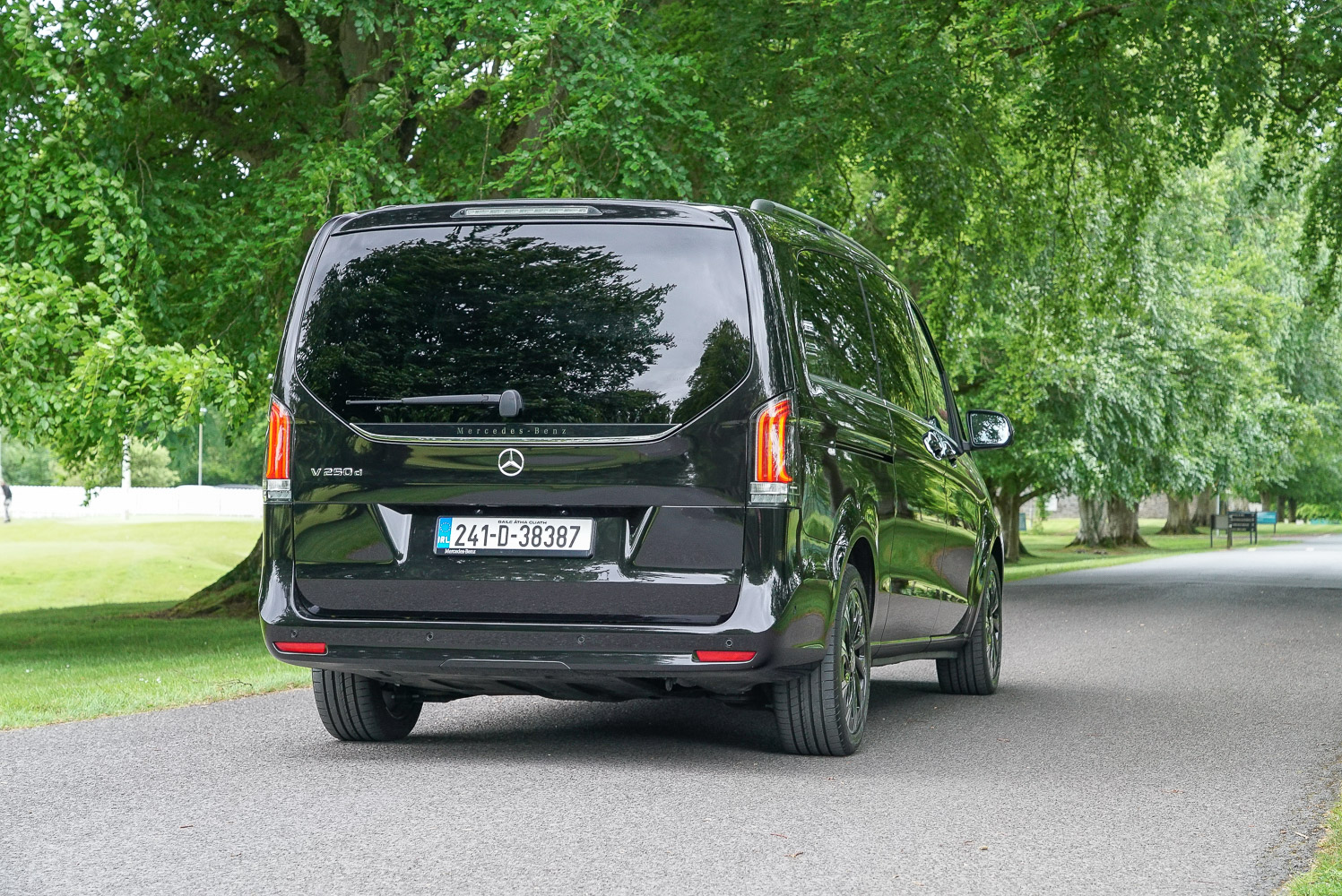
How much is the 2024 Mercedes V-Class?
Irish prices for the Mercedes V-Class start from €132,460, which puts it well above many van-based MPV rivals. This gets you behind the wheel of a V 250 d in Avantgarde specification, but while it’s the entry point to the range, it’s far from being spartan. There are heated, electrically adjustable and automatically folding door mirrors, silver roof rails, LED lights front and rear with main beam assist up front, tinted rear windows to keep prying eyes and the sun out, a multifunction steering wheel, 64-colour LED ambient lighting, automatic climate control and leather trim throughout. Metallic paint is also included in the V-Class’s price.
Standard tech includes the MBUX infotainment system with touchscreen and voice control, wireless phone charging and smartphone integration so you can use Apple CarPlay or Android Auto. There’s a 360-degree camera system to help with parking, too.
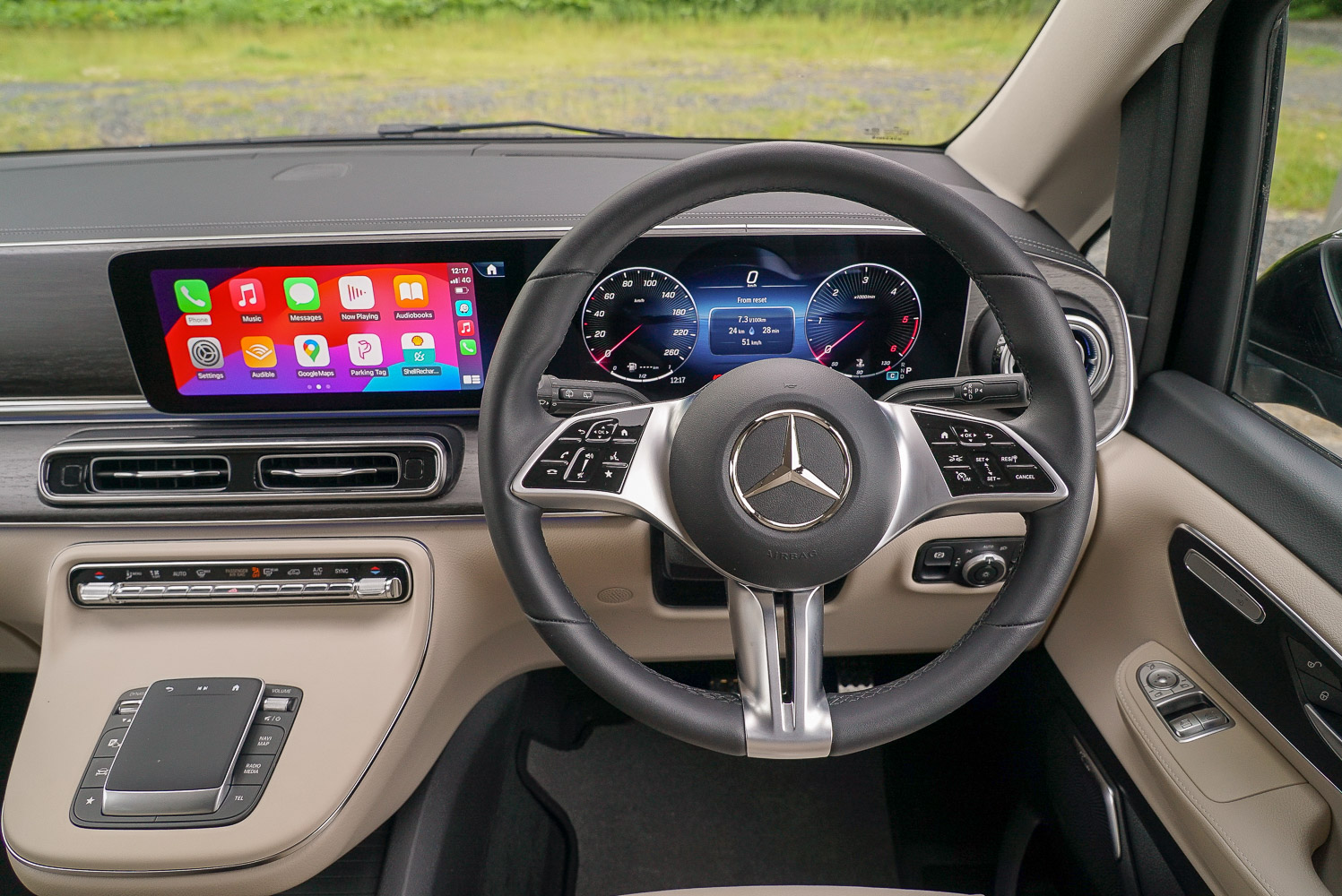
For €6,555 extra, the AMG Line package can be added to the Avantgarde model, bringing with it some sporty touches and - rather bizarrely - sports suspension, but no extra power.
There are two engine options in the V-Class, and above the V 250 d sits the V 300 d for €4,230 extra. While the 250 d produces up to 190hp, the 300 d bumps this up to a sizeable 237hp from the same core 2.0-litre diesel.
As well as the Avantgarde trims, the V 300 d can be ordered in even plusher Exclusive spec, from €156,475. This adds softer Nappa leather upholstery, while there’s heating for the front seats, steering wheel and washer jets. The front seats are electrically adjustable, too, and the rears feature individual armrests and tray tables with lighting. The sliding side doors are electrically operated, as is the tailgate, while adaptive dampers are included.
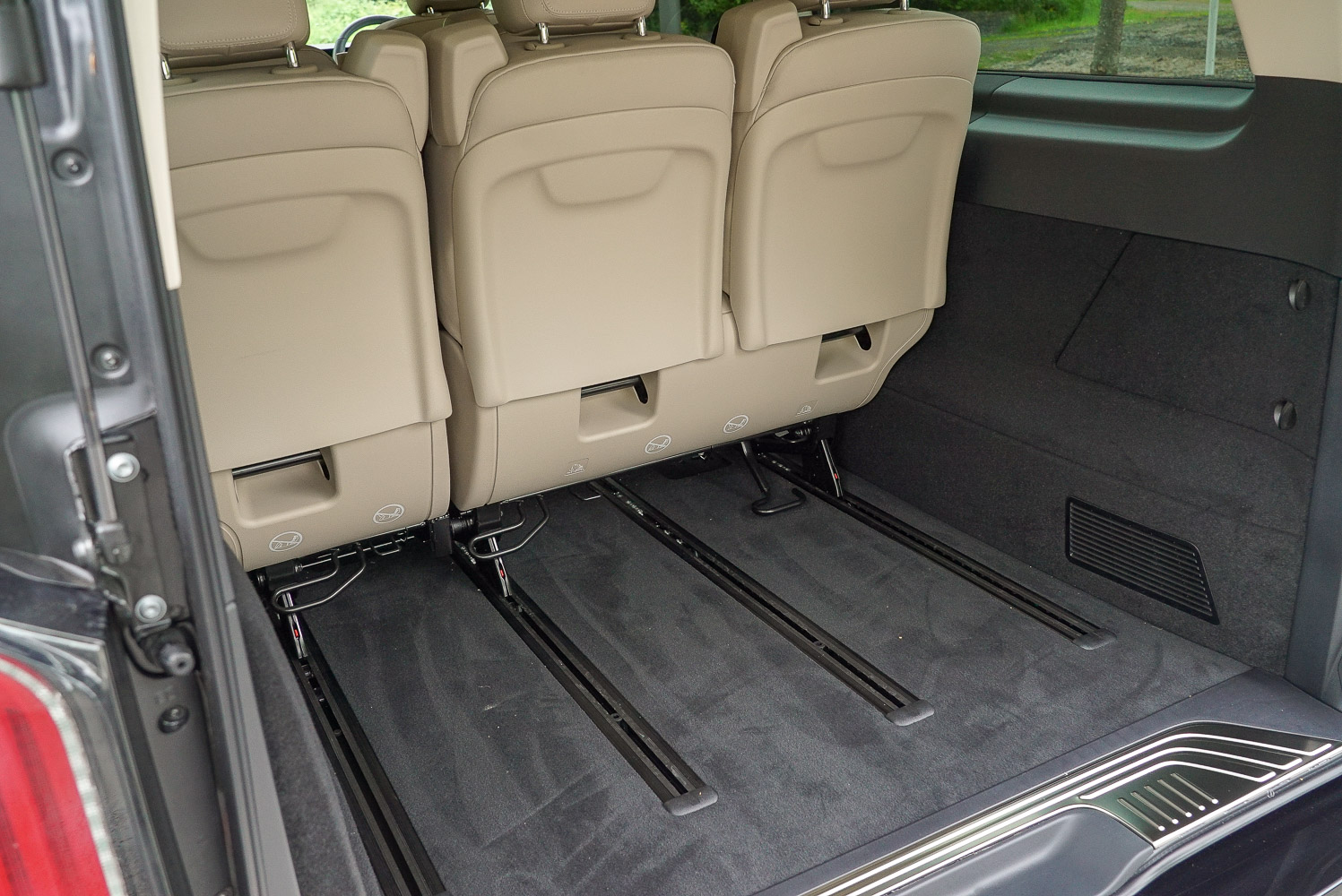
Both diesel models come exclusively in the largest ‘Extra-Long’ body style, which comes with six seats as standard. However, buyers can upgrade to a seven-seat layout (as featured in our test car) for €1,140, or there’s an eight-seat layout that adds €2,515 to the basic price.
As well as the two diesels, Mercedes offers an electric model called the EQV 300. This has a 90kWh battery for a WLTP-tested range of up to 356km, while power comes from a 204hp electric motor. The EQV only comes in the ‘long’ body, so isn’t quite as large as the diesel models, and it only comes in Avantgarde trim. Lower taxation mean it’s cheaper than the diesels, though, at €125,830.
What’s new on the outside of the Mercedes V-Class?
The biggest visual changes are at the front, where the three versions look notably different. On the Avantgarde cars, the grille now features a star pattern that’s become a trademark of current Mercedes models, and a black grille surround as seen on the latest E-Class - although this isn’t so obvious if the V-Class is painted black, as most of them will be. Hence buyers are unlikely to care that there are four new paint colours as part of the update. At the back, there’s a new chrome strip with the Mercedes-Benz lettering above it, along with redefined lights for a more modern appearance.
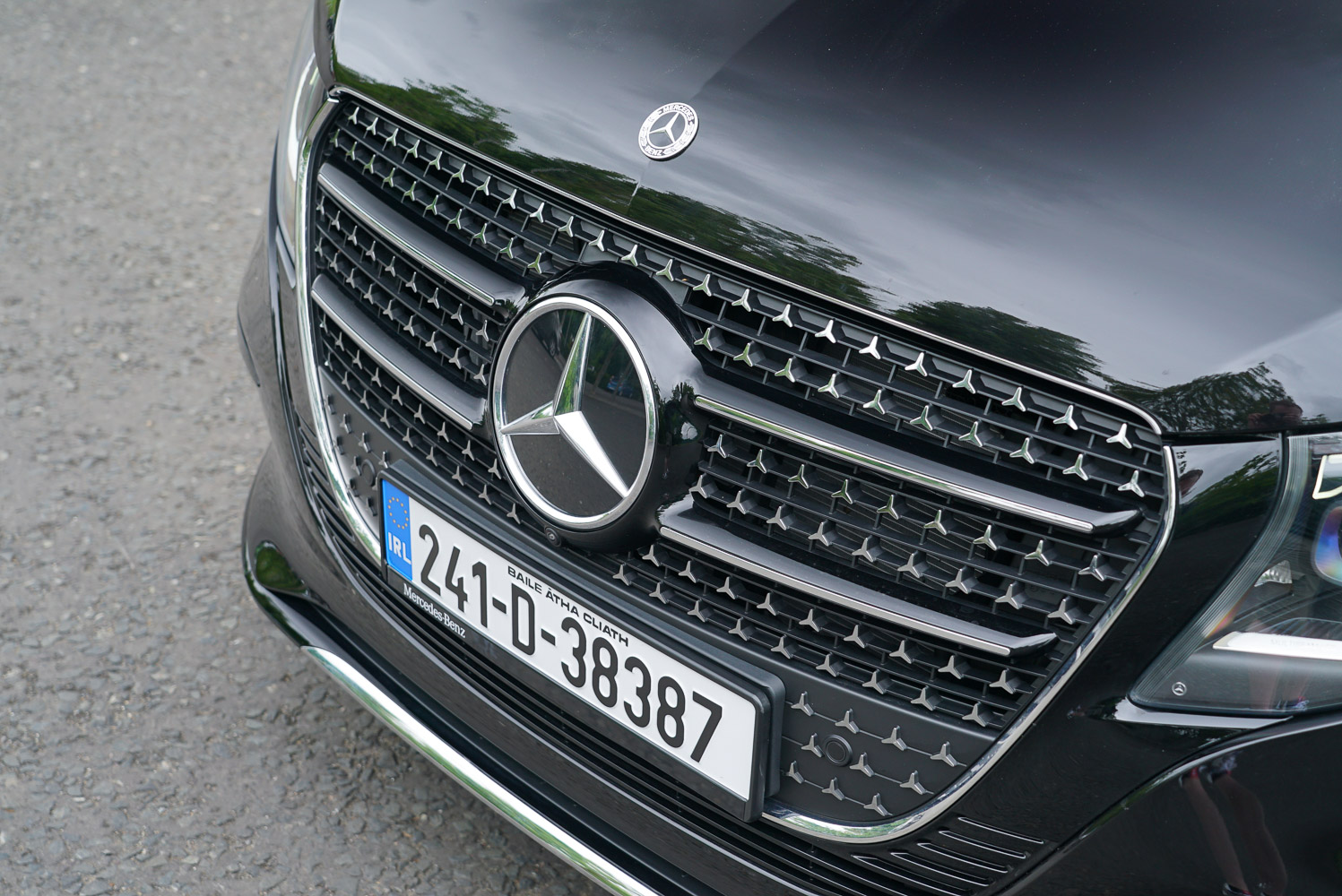
All models get distinctive Multibeam LED headlights and tinted glass for the rear windows. There are new wheel designs, too, the minimum size 17 inches in diameter, rising to 19-inch five-spoke items on the AMG Line model and highly distinctive ‘monobloc’ rims for the Exclusive version.
Along with the bigger wheels, the AMG Line pack adds a body kit that includes new bumpers front and rear, a tailgate spoiler and extra chrome trim, while the star-pattern grille gets an LED light strip and the brake callipers gain Mercedes-Benz branding. It looks a little garish to our eyes and somehow not in keeping with the whole point of the V-Class.
Much better is the range-topping Exclusive model with its special wheels, more traditional radiator grille (with LED lighting of course) and even an upright Mercedes star on the bonnet.
A look inside the Mercedes V-Class
Thanks to the van-derived body, there’s a huge amount of space in the V-Class’s cabin, and that will be the case whether you choose a six-, seven- or eight-seat layout. The driving position is tall like a van’s, but the surroundings mean the V-Class has a unique ambience, featuring plenty of soft-touch materials, leather upholstery, LED cabin lighting and a modern touchscreen.
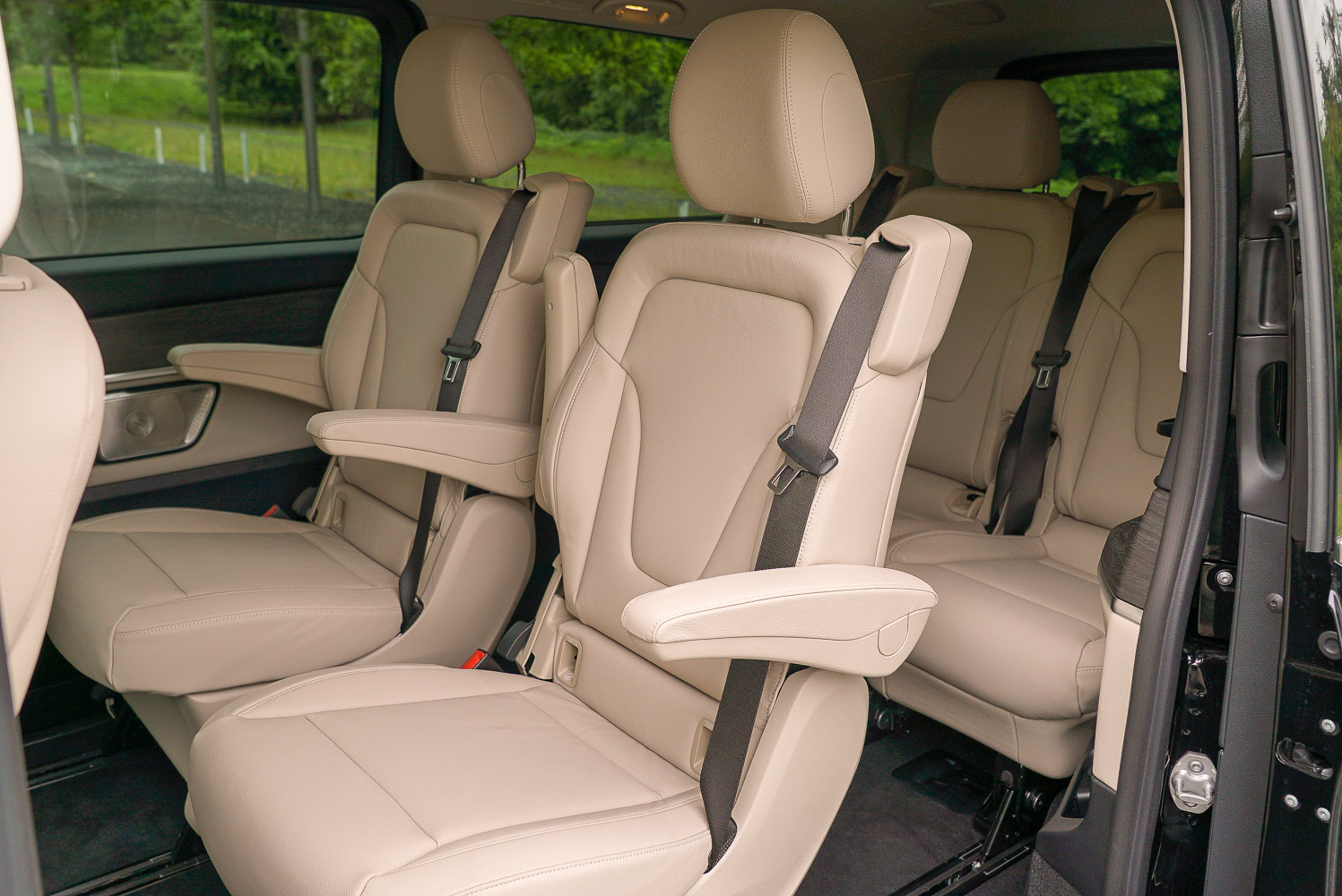
Build quality is great, although there are some harder plastics lower down on the dashboard and doors, but the rest of the cabin makes up for it. One difference between the V-Class and Vito Tourer is that the former includes carpets instead of durable plastic flooring, which boosts its plushness and helps reduce road noise in the cabin.
There are two chairs up front, and the wide body means it’s possible to walk through to the back of the V-Class without getting out. The six-seat layout features four individual chairs in the back which are mounted on rails so they can slide back and forth, while the two middle seats rotate through 180 degrees if back-seat passengers want to sit face-to-face. The chairs also fold and recline, feature integrated seatbelts and all come with ISOFIX child seat mounts.
The seven-seat layout includes a three-seat bench to the rear row, but this slides and can be reclined flat to create a bed, if necessary, although the single backrest is a bit cumbersome to adjust. For the eight-seater, the middle row also features a three-seat bench, but the back rests fold to boost access to the rearmost row. As with the rear bench, the seats slide back and forth to optimise space.
Access to the cabin is easy, courtesy of the sliding side doors, but the rear tailgate is big and heavy to use - and electric opening is only available on the top-spec Exclusive model. Thanks to the Extra Long body, boot space is still decent even with all the seats in use.
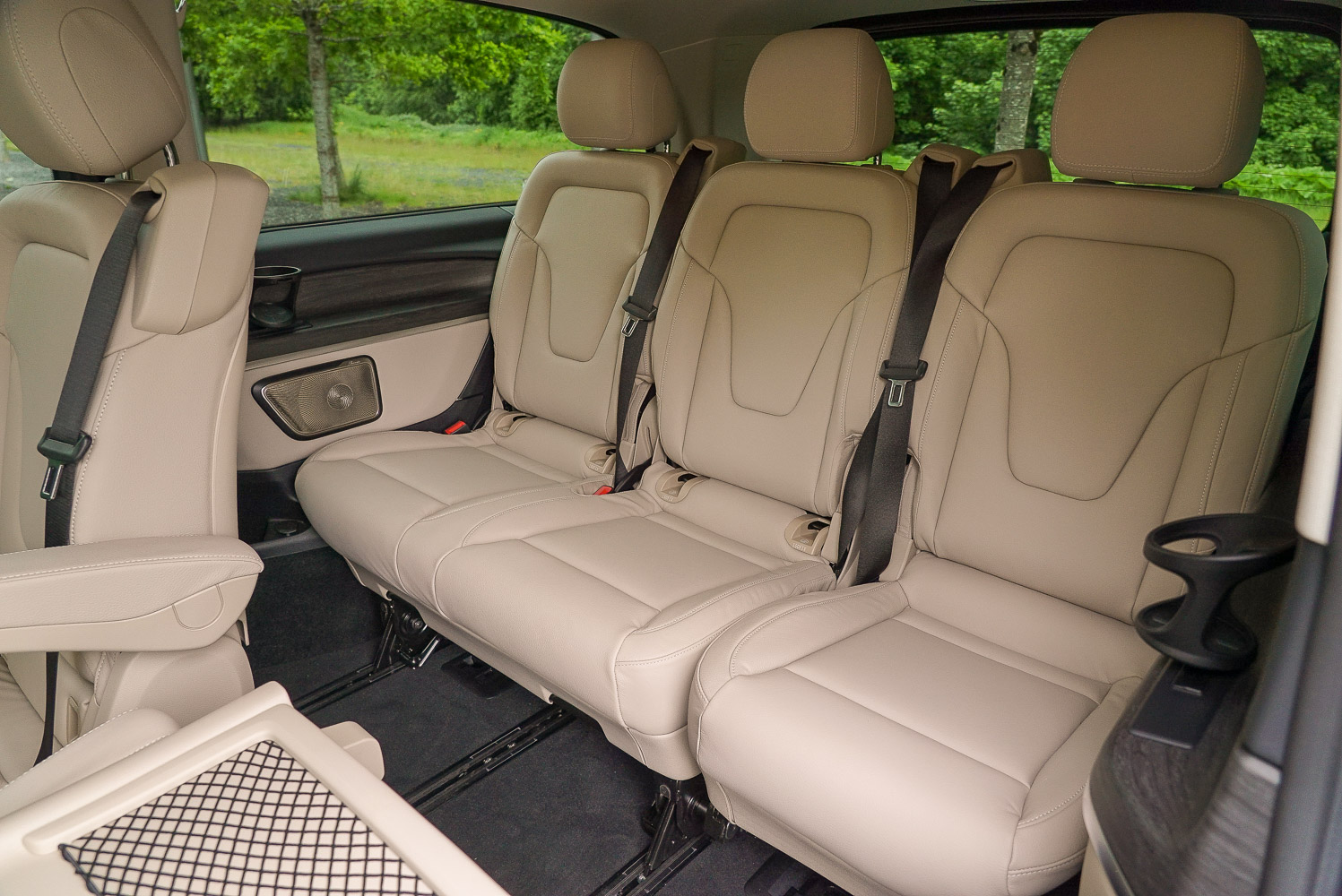
How safe is the Mercedes V-Class?
The most recent set of results for the V-Class from Euro NCAP harks back to 2014, when it scored well, particularly for adult and child protection and ‘Safety Assist’. As it’s such a tall vehicle it’s not a massive surprise to see a relatively poor pedestrian protection rating of 67 per cent, though the active safety systems should reduce the chance of a collision in any case. As standard, the V-Class gets Active Brake Assist, Blind Spot Assist, Active Lane Keeping Assist, plus Attention Assist to ensure the driver is paying attention.
Driving the Mercedes V-Class
The latest V-Class is powered by a 2.0-litre turbodiesel, which is more efficient than the 2.1-litre unit previously used. It’s notably quieter, too, while the stop-start system operates quickly so you never feel the need to override it. The modest decrease in capacity hasn’t spoilt the engine’s torquey response and it’s certainly helped by the nine-speed automatic gearbox, which delivers smooth shifts that make the most of the performance. It feels as fast as it needs to be.
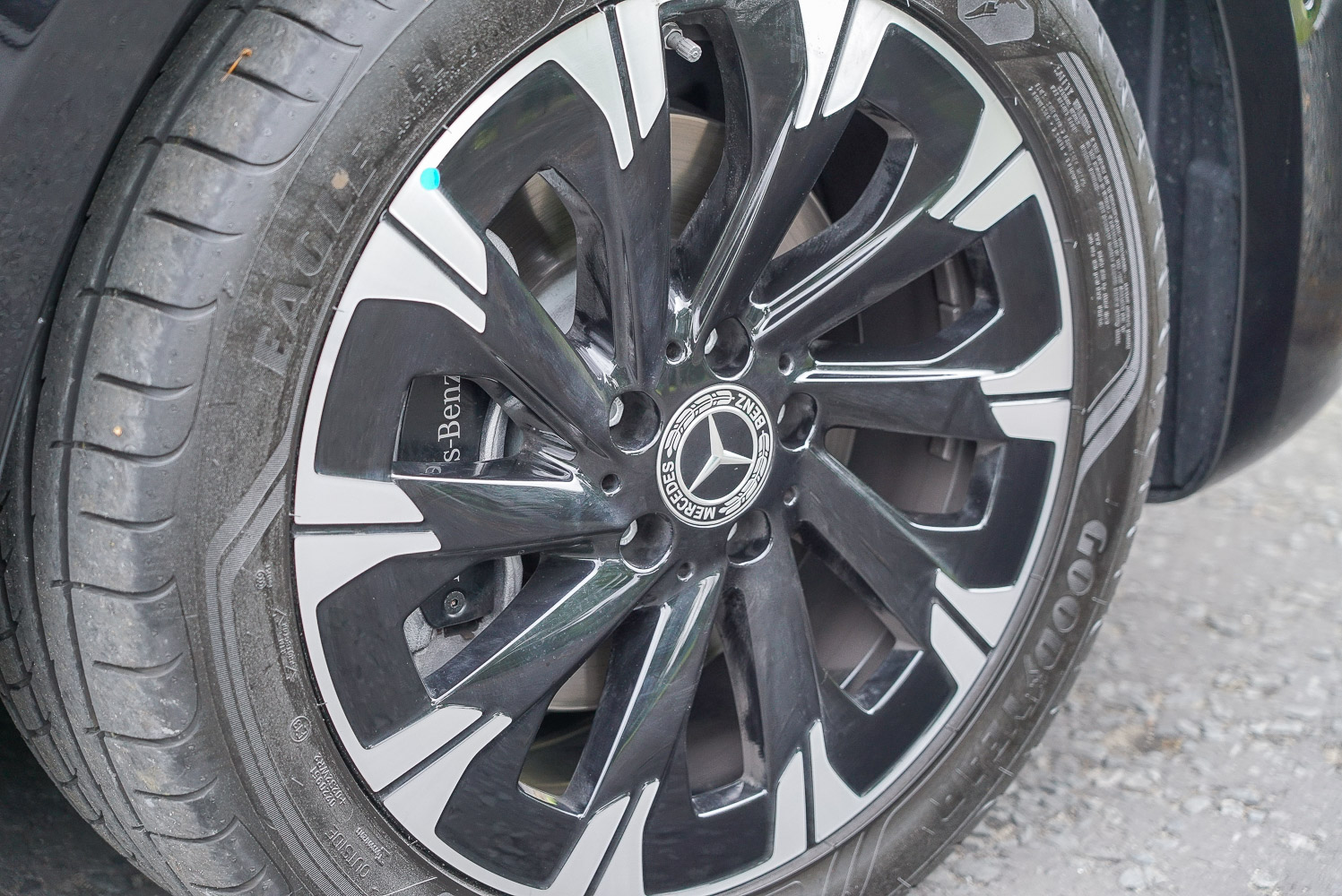
There are three drive modes on offer - Eco, Comfort and Sport - that are selected via a knurled roller on the centre console, although most of the time the default Comfort setting is perfectly acceptable. The Sport mode does enhance response to the accelerator pedal at lower speeds and allows the transmission to hold onto gears for longer, though this is of little use in this car unless you need to perform a safe overtake around slow-moving traffic on single-carriageway roads.
Comfort and refinement are what matter in a car such as this, and the V-Class disguises its commercial vehicle roots well in that regard. It feels stable at motorway speeds and composed even on twisty roads, without compromising the comfort of those inside.
How economical is the Mercedes V-Class?
According to the official WLTP figures, the V 250 d tested here uses 7.5 litres/100km on average. Even without a lot of mileage on the motorway we managed a creditable 6.7 litres/100km, though that was with only a driver on board and no passengers. Load up the V-Class and you can be sure it will use more fuel than that. Then again, it should prove to be quite economical on a long drive if you use the excellent cruise control system.
The reasons you’d buy a Mercedes V-Class
While many a big family would love access to a V-Class, realistically it’s too expensive for the average household, reflecting the fact that it’s designed for business buyers to be used as a classy, high-quality mover of lots of people and their luggage. It’s more subtle than a traditional limousine, for those that don’t want to grab attention, yet the Mercedes badge also gives the car more street cred than most van-based people carriers can hope to achieve. The updated model improves the design a little, while bringing the comfortable and versatile cabin bang up to date.
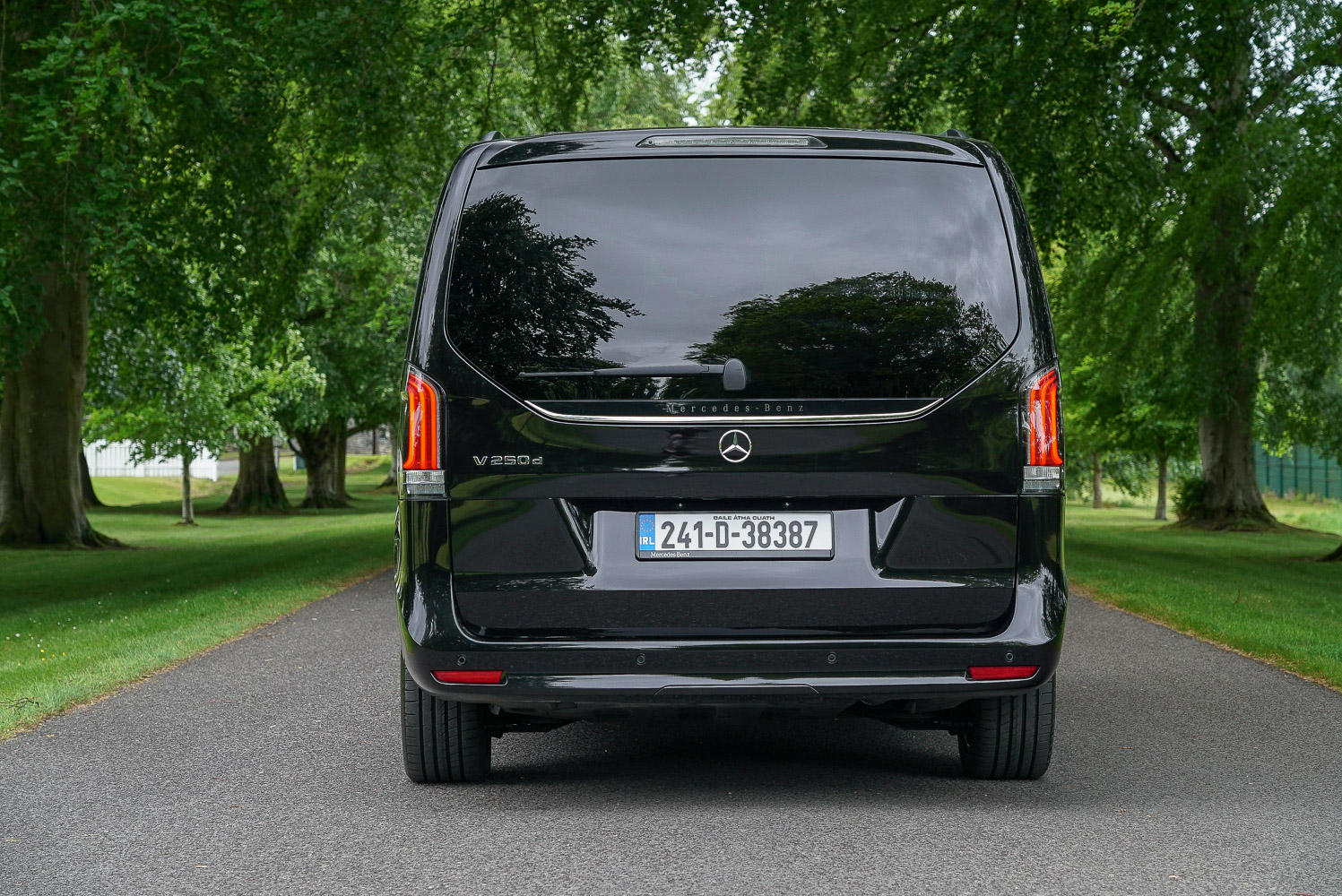
Ask us anything about the Mercedes V-Class
If there’s anything about the Mercedes V-Class we’ve not covered, or you’d like advice in choosing between it and other vehicles, you can avail of our (completely free) expert advice service via the Ask Us Anything page.

